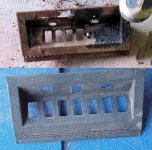I'm gonna ask a question, maybe a stupid one.....checked with the search function and didn't find anything that I could see that would answer my query to my satisfaction. Here it is:
Why do pro-cars seem to rust worse than factory-built cars or is it just me? For example, in the Sad Pro-Car threads right near the beginning there is a 75-76 ambulance [don't remember if it's a M+M or some other coach builder] sitting in someone's driveway with the word 'Kimball' on the roof and the front end is rusted all to hell, even the headlight doors and the hood!! I don't seem to remember this happening with factory cars when I've roamed around various junkyards......any ideas?? Or correct me if I'm wrong....
Why do pro-cars seem to rust worse than factory-built cars or is it just me? For example, in the Sad Pro-Car threads right near the beginning there is a 75-76 ambulance [don't remember if it's a M+M or some other coach builder] sitting in someone's driveway with the word 'Kimball' on the roof and the front end is rusted all to hell, even the headlight doors and the hood!! I don't seem to remember this happening with factory cars when I've roamed around various junkyards......any ideas?? Or correct me if I'm wrong....



